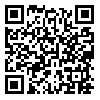Volume 16 - Special Issue on Cognitive Sciences
BCN 2025, 16 - Special Issue on Cognitive Sciences: 353-366 |
Back to browse issues page
Download citation:
BibTeX | RIS | EndNote | Medlars | ProCite | Reference Manager | RefWorks
Send citation to:



BibTeX | RIS | EndNote | Medlars | ProCite | Reference Manager | RefWorks
Send citation to:
Kord M, Fath-Abadi J, Gharibzadeh S, Khosrowabadi R. Enhancing EEG Components in Adolescents With ADHD Using Transcranial Electrical Stimulation: A Randomized-active Controlled Study. BCN 2025; 16 (S1) :353-366
URL: http://bcn.iums.ac.ir/article-1-2620-en.html
URL: http://bcn.iums.ac.ir/article-1-2620-en.html
1- Institute for Cognitive and Brain Sciences, Shahid Beheshti University, Tehran, Iran.
2- Department of Psychology, School of Educational Sciences and Psychology, Shahid Beheshti University, Tehran, Iran.
3- Department of Educational Measurement and Evaluation, Faculty of Educational Sciences and Psychology, University of Tehran, Tehran, Iran.
2- Department of Psychology, School of Educational Sciences and Psychology, Shahid Beheshti University, Tehran, Iran.
3- Department of Educational Measurement and Evaluation, Faculty of Educational Sciences and Psychology, University of Tehran, Tehran, Iran.
Abstract:
Introduction: Transcranial electrical stimulation (tES), including transcranial direct current stimulation (tDCS) and transcranial random noise stimulation (tRNS), can improve neuropsychological and cognitive deficits in attention deficit hyperactivity disorder (ADHD). Here, we investigated the effectiveness of various tES modes combined with working memory training in children and adolescents with ADHD.
Methods: Participants in this study consisted of a cohort of 13- to 17-year-old adolescents (N=45) who were diagnosed with ADHD in 2018. They were randomly assigned to three groups: tDCS, tRNS, and the active control (sham). The three groups received five sessions of tES either as an intervention or sham on the left and right prefrontal areas (F3 and F4). In addition to tES, dual n-back training was used in the three groups. The Wechsler’s digit span subtest and resting state electroencephalography (EEG) data were collected before and after brain stimulation.
Results: Analysis of variance showed significant differences between the groups in some EEG channels (P=0.05). The absolute power analysis of the brain waves data in the pre-test and post-test phases reveals that the tDCS group has the greatest changes compared to the other two groups and that most changes in the absolute power related to theta, delta, and alpha bands were found in the frontal and occipital regions.
Conclusion: Based on the results, we concluded that tES over the prefrontal area induced cortical changes in children and adolescents with ADHD. Thus, it seems that various methods of tES can be used in combination with other common types of intervention to treat ADHD.
Methods: Participants in this study consisted of a cohort of 13- to 17-year-old adolescents (N=45) who were diagnosed with ADHD in 2018. They were randomly assigned to three groups: tDCS, tRNS, and the active control (sham). The three groups received five sessions of tES either as an intervention or sham on the left and right prefrontal areas (F3 and F4). In addition to tES, dual n-back training was used in the three groups. The Wechsler’s digit span subtest and resting state electroencephalography (EEG) data were collected before and after brain stimulation.
Results: Analysis of variance showed significant differences between the groups in some EEG channels (P=0.05). The absolute power analysis of the brain waves data in the pre-test and post-test phases reveals that the tDCS group has the greatest changes compared to the other two groups and that most changes in the absolute power related to theta, delta, and alpha bands were found in the frontal and occipital regions.
Conclusion: Based on the results, we concluded that tES over the prefrontal area induced cortical changes in children and adolescents with ADHD. Thus, it seems that various methods of tES can be used in combination with other common types of intervention to treat ADHD.
Keywords: Electroencephalography (EEG), Transcranial electrical Stimulation, Attention-deficit/hyperactivity disorder (ADHD)
Type of Study: Original |
Subject:
Cognitive Neuroscience
Received: 2022/12/8 | Accepted: 2023/04/10 | Published: 2025/03/18
Received: 2022/12/8 | Accepted: 2023/04/10 | Published: 2025/03/18
Send email to the article author
| Rights and permissions | |
 |
This work is licensed under a Creative Commons Attribution-NonCommercial 4.0 International License. |








